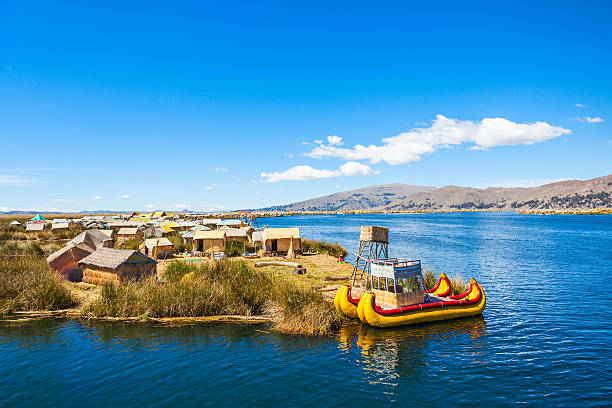
Copacabana Festival in August: A Practical Guide to Culture and Adventure at Lake Titicaca
The Copacabana Festival in August is an unmissable blend of vibrant culture and high-altitude adventure on the shores of Lake Titicaca. From spirited processions to forested hikes with sweeping views, it offers visitors a practical yet immersive experience in one of Bolivia's most captivating destinations.
Acclimate Before You Explore
Spend a day at the altitude of Copacabana (around 3,800 meters) before hiking to prevent altitude sickness and improve your performance on the trails.
Bring Plenty of Water
Dry air and altitude increase dehydration risk; carry at least 2 liters per person, especially during hikes or lengthy festival days.
Wear Sturdy, Breathable Footwear
Trails vary from loose dirt to rocky outcrops—footwear with good ankle support and grip ensures safety and comfort.
Plan Hikes Around Weather and Light
Early mornings and late afternoons offer cooler temperatures and beautiful lighting but watch afternoon clouds which can signal a sudden mountain shower.
Copacabana Festival in August: A Practical Guide to Culture and Adventure at Lake Titicaca
Every August, Copacabana in the La Paz region comes alive with a festival that commands attention. The Copacabana Festival blends rich Andean traditions with an atmosphere ripe for adventure—making it a rare experience where culture and the natural world collide. Held at the shores of Lake Titicaca, this festival is not just about festivities; it’s a gateway to exploring a unique environment where the high-altitude lake and surrounding hills engage every visitor.
The festival features vibrant processions, traditional music, and ritual offerings to the lake, seen by locals as a living force that shapes life here. As you join celebrants, the sound of drums and flutes compete with the breeze that carries whispers across the water, daring you to explore beyond the town’s plaza.
If you decide to hike while attending the festival, the nearby hills offer trails from 3 to 6 kilometers, with elevation gains of around 300-500 meters. Terrain varies between well-worn paths through eucalyptus and oak forests, and rocky sections where the trail tests your footing. The forest feels alive, with trees seeming to guide your steps, while the lake stretches vast and unwavering, enticing with panoramic views from above.
Plan your hikes in the early morning or late afternoon when cooler temperatures prevail and the sun’s angle enhances those exceptional vistas. Hydration is critical—sun at 3,800 meters (12,500 feet) can be unrelenting. Good footwear with solid grip is non-negotiable on the uneven slopes.
Beyond the hiking, the festival beckons you: indigenous dances in colorful costumes perform narratives tied to the earth and water, a reminder that this place is fiercely itself. Vendors line the streets, offering crafts and local foods, practical for refueling after time outdoors.
Whether you’re a casual observer or a seasoned adventurer, participating in the Copacabana Festival while exploring its surrounding trails offers a balance of human spirit and natural challenge. Respect the altitude, prepare for sharp temperature shifts, and immerse yourself in a landscape that engages your senses without exaggeration—just pure experience, waiting to be earned.
Nearby Trips
All Adventures
Boat Charters
Water Activities
Adventures near Copacabana, La Paz
Discover the unique and memorable adventures that make Copacabana, La Paz special.
Frequently Asked Questions
What are must-see cultural events during the Copacabana Festival?
Key attractions include the Procession of the Three Virgins, traditional Aymara dances, and the ceremonial offerings to Lake Titicaca. These are typically held in the mornings and afternoons around the main plaza, offering insight into local beliefs and social rhythms.
How physically demanding are the hikes around Copacabana during the festival?
Hiking trails near Copacabana range from moderate to challenging due to elevation and rocky terrain. Elevation gain between 300-500m is typical, making them manageable for hikers with some fitness experience but requiring acclimatization and pace management.
Are there any hidden viewpoints nearby worth visiting?
Yes. The Mirador Kuntur Wasi, about a 4 km hike from town, offers sweeping views of Lake Titicaca’s blue expanse and the Andes. The hike feels intimate as eucalyptus groves lean gently along the path, framing the scene.
What local wildlife might I encounter during hikes?
Keep an eye out for Andean geese, lake ducks, and if lucky, the shy vizcacha—a rabbit-like rodent blending into the rocks. Birdsong punctuates the forested sections, inviting you deeper into nature’s rhythm.
How can I contribute to conservation while attending the festival?
Respect festival waste protocols, avoid plastic disposables, and stay on marked trails to protect fragile high-altitude flora. Supporting local artisans through purchases also helps sustain cultural tradition and environmental stewardship.
When is the best time of day for photography at the festival and nearby trails?
Early morning and late afternoon light cast vivid shadows and warm hues on both festival scenes and landscapes. The lake’s glassy surface often mirrors the sky best at these times, ideal for capturing reflections and candid moments.
Recommended Gear
Water Bottle or Hydration Pack
Essential for staying hydrated in dry mountain air, especially during festival days under a high sun.
Layered Clothing
Temperatures fluctuate from warm daytime to chilly nights; layering helps regulate body heat.
Good Hiking Shoes
Manage rocky, uneven trails safely with solid soles and ankle support.
Sun Protection (Hat/Sunscreen)
High-altitude sun intensity is strong year-round; protect skin and eyes even in cooler weather.
Local Insights
Hidden Gems
- "Mirador Kuntur Wasi viewpoint"
- "Small artisan markets away from main festival plaza"
Wildlife
- "Andean goose"
- "vizcacha"
- "varieties of lake ducks"
History
"Copacabana is historically significant as a religious center combining indigenous spirituality with colonial Catholic influences, evident in festival practices honoring both traditions."
